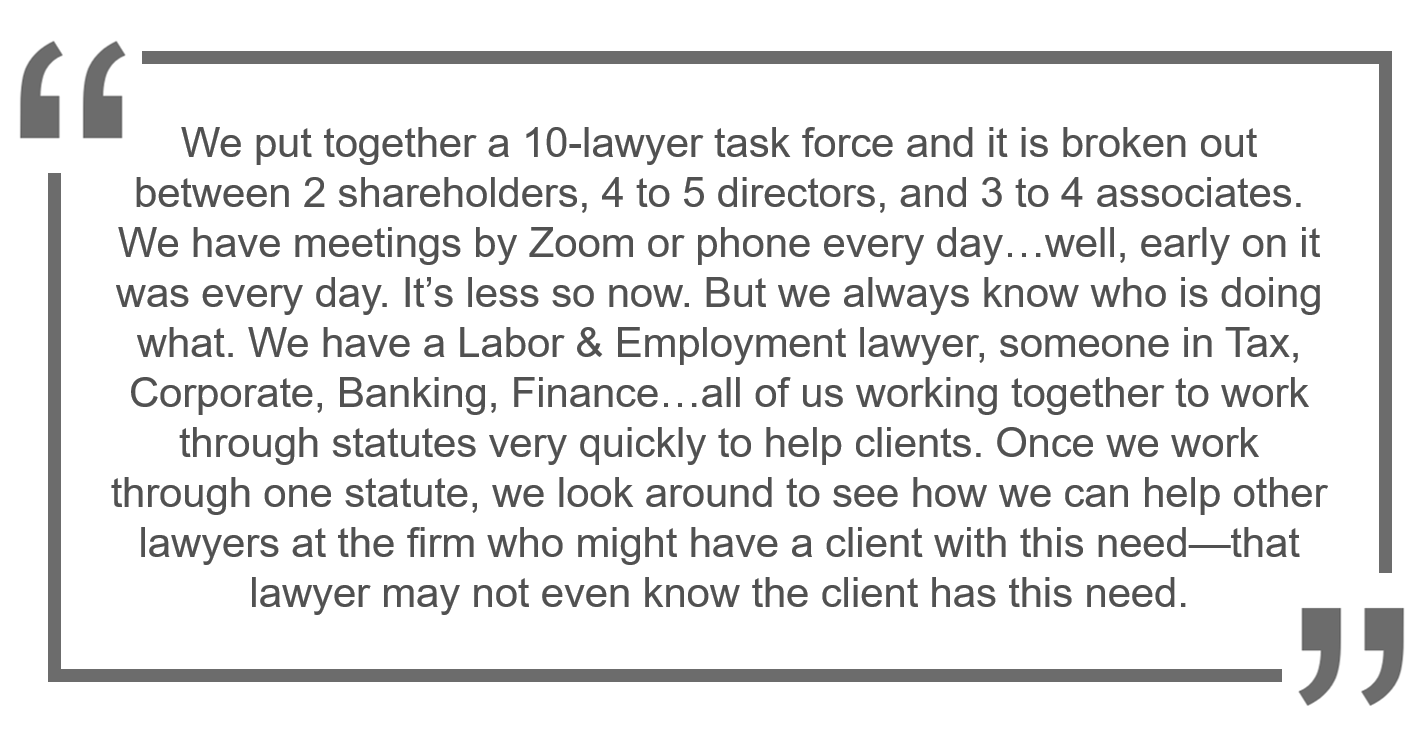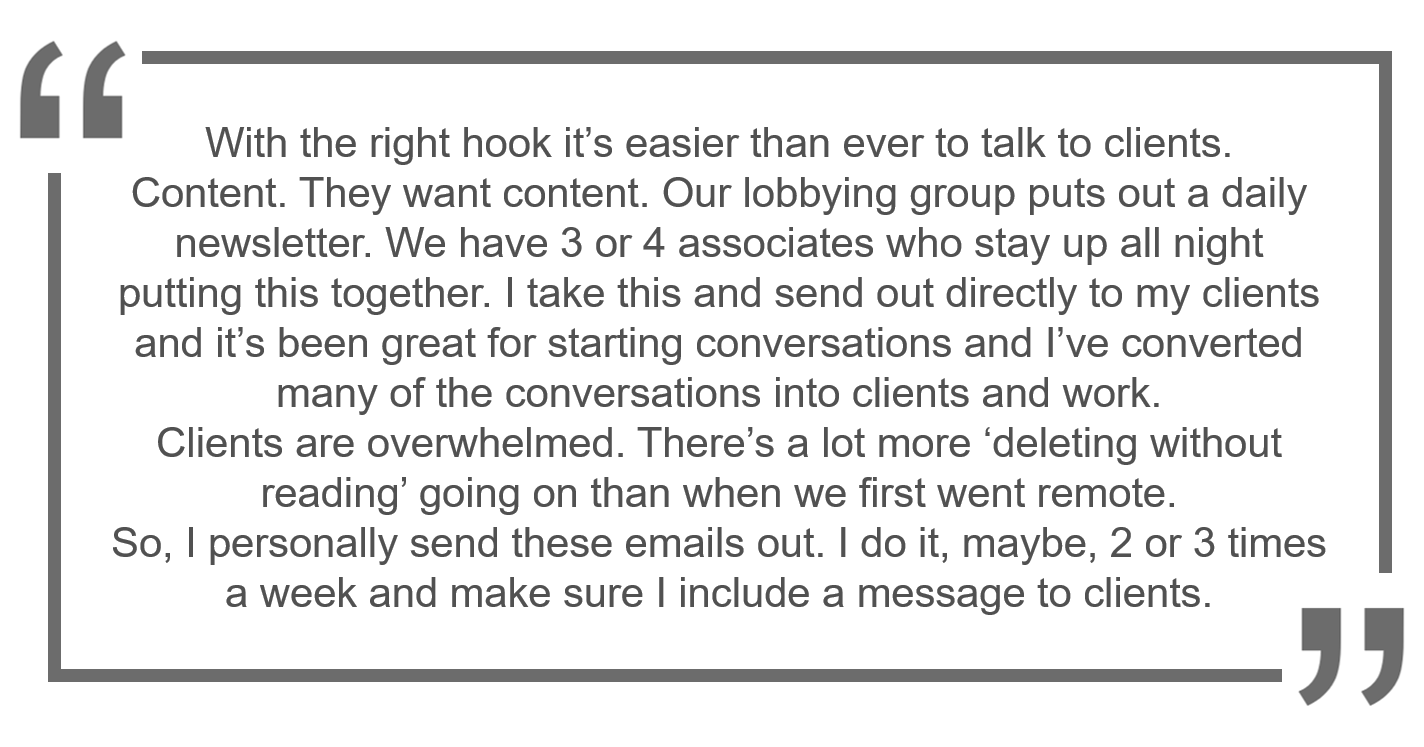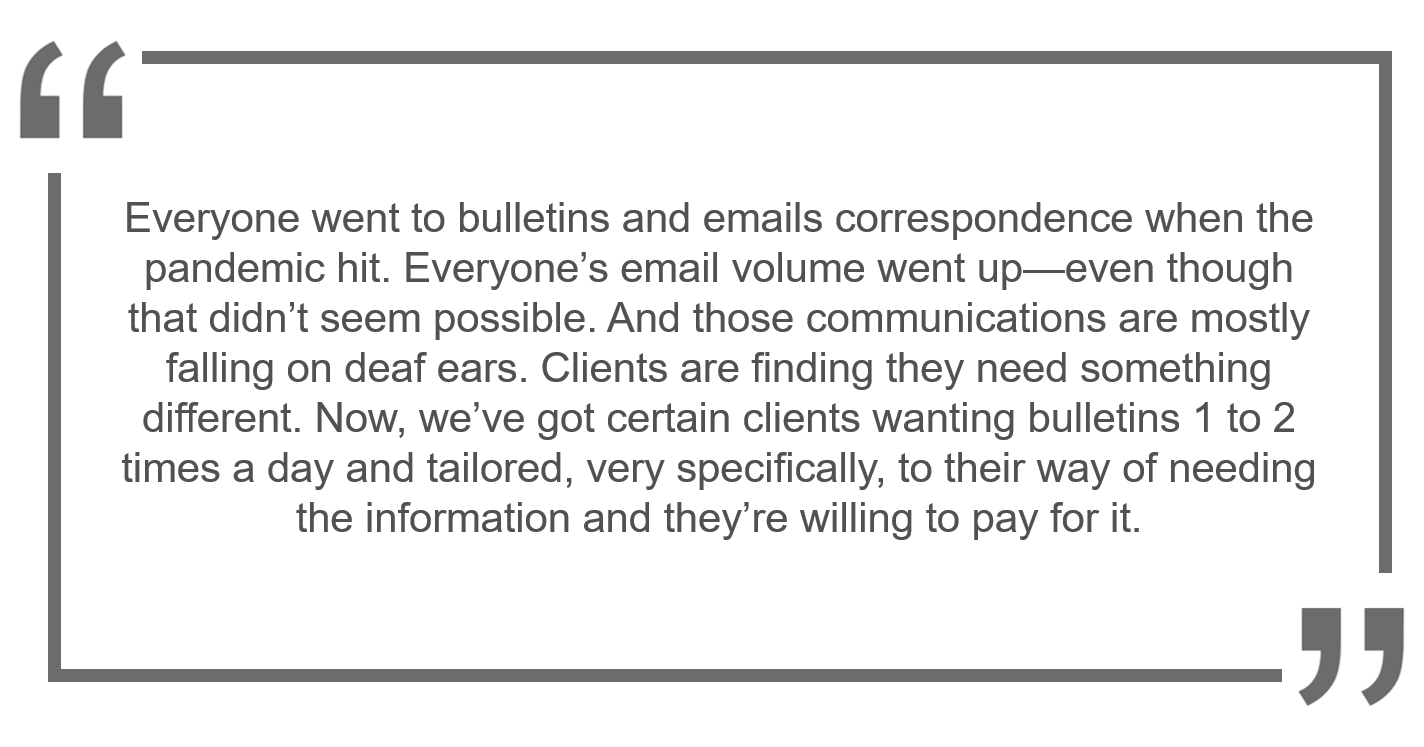In recent conversations with lawyers, I heard a lot about change, including new ways of collaborating, winning work, and staying connected with key clients
“Everything has changed. The business model that we have is changed, how we do business is changed, how we talk to people has changed.”
This is how the first of a half dozen conversations I’ve had with law firm lawyers over the last two weeks kicked off.
Last month, I began interviewing lawyers to try out a new survey instrument part of an upcoming study being conducted by Thomson Reuters Acritas. The questions covered a broad spectrum of topics about return to office plans — and, more importantly, what new working habits lawyers might want to keep when (or if) working from the office returns to being the standard instead of the exception.
I heard a lot about change — new ways of collaborating internally; new ways of staying connected with clients; and new ways of winning work. But despite all the flexibility, resiliency, and innovation that I heard about in each conversation, the question most everyone struggled with was, “Will these changes last?”
Indeed, each lawyer I spoke with had at least one (if not four to five) elements they wanted to keep intact once they returned to the office. But nearly every one of them also admitted that traditional firm culture would likely stand in the way of making these new approaches permanent.
So, why the rush to return to old ways of working, even though the adaptations lawyers are making — out of necessity — are proving successful?
Working better together while apart
After doing this type of research for 15 years, it’s exciting when you hear the unexpected. And better collaboration was definitely not what I expected to be discussing in these interviews. So, as soon as I started hearing it, I threw aside the interview guide I was supposed to be following, and instead asked the instinctual question.
How? How are you making collaboration work under these conditions when most lawyers struggle with this concept even when they’re in the same building?
And while the individual tactics differed, the building blocks to collaborative success cited by lawyers I spoke to were shockingly similar:
-
-
- Create a small, trusted team — Not everyone wants to collaborate, and it wastes time trying to get widespread buy-in because often, the more people involved, the less nimbly the team can react and adjust approaches.
- Have a clear goal — A single, clear deliverable or outcome keeps the team engaged and focused; and once one goal is achieved a new one can be tackled.
- Assign roles, stay in your lane, and check in often — Trust in the team is paramount and knowing who is doing what means the task force can also get their day-to-day work done.
-
One lawyer described how they assembled a cross-practice task force:

He went on to tell me that he truly enjoyed working in the task force and it has opened new business opportunities for him. But when pressed on whether or not the task force approach would be kept once the team was in the office, there was a pause. He admitted being in the office de-formalized approaches like task forces because you end up mostly talking to the people within the nearest four or five offices to your own.
There’s no such thing as too much client contact during a crisis
Ongoing communications with clients are the cornerstone of relationship-building during the best of times. And when the pandemic hit, law firms were quick to not miss a beat. Newsletters, daily bulletins, and weekly webinars took the limelight — and, more importantly, client engagement soared. But legal buyers’ needs shifted quickly and the desire for as much information as possible transformed into requests for targeted advice from their trusted advisors, placing pressure on lawyers (rather than marketing departments) to ramp up direct communication.
One partner discussed how she, personally, sends out more than 80 client emails a week while juggling a full caseload—and how her communication plan has paid off:

Another partner I spoke with echoed the importance and value of these communications to clients:

As I continued conducting the Acritas summer survey of law firm lawyers to gain more perspectives on return to office preferences, the question that went unanswered from my interviews remains: Despite embracing new ways of working while being remote and seeing a positive impact, what’s holding lawyers back from realizing the benefits of these adaptations after the pandemic?
Should the modified playbook be kept in rotation?







